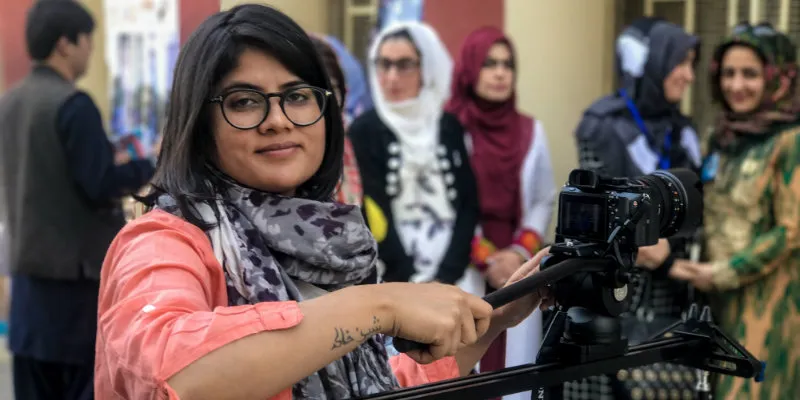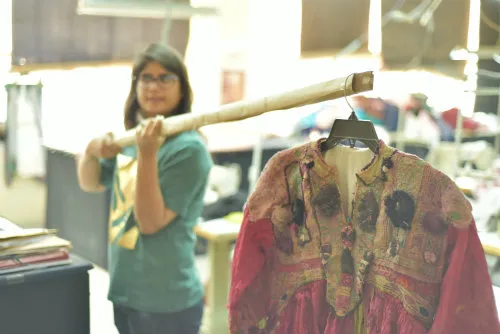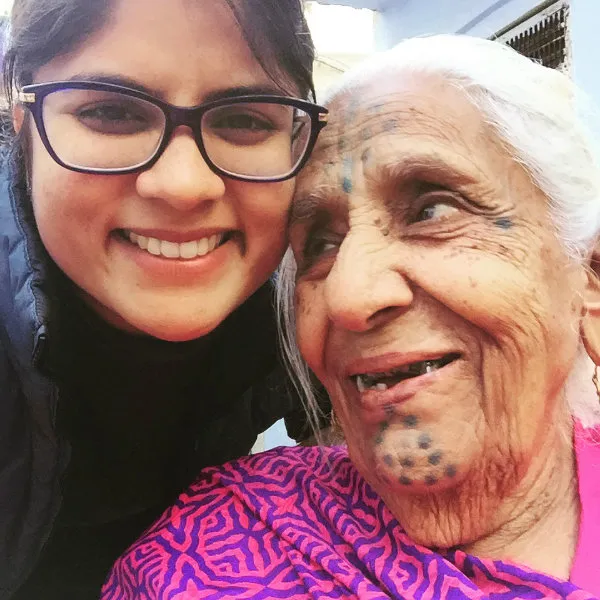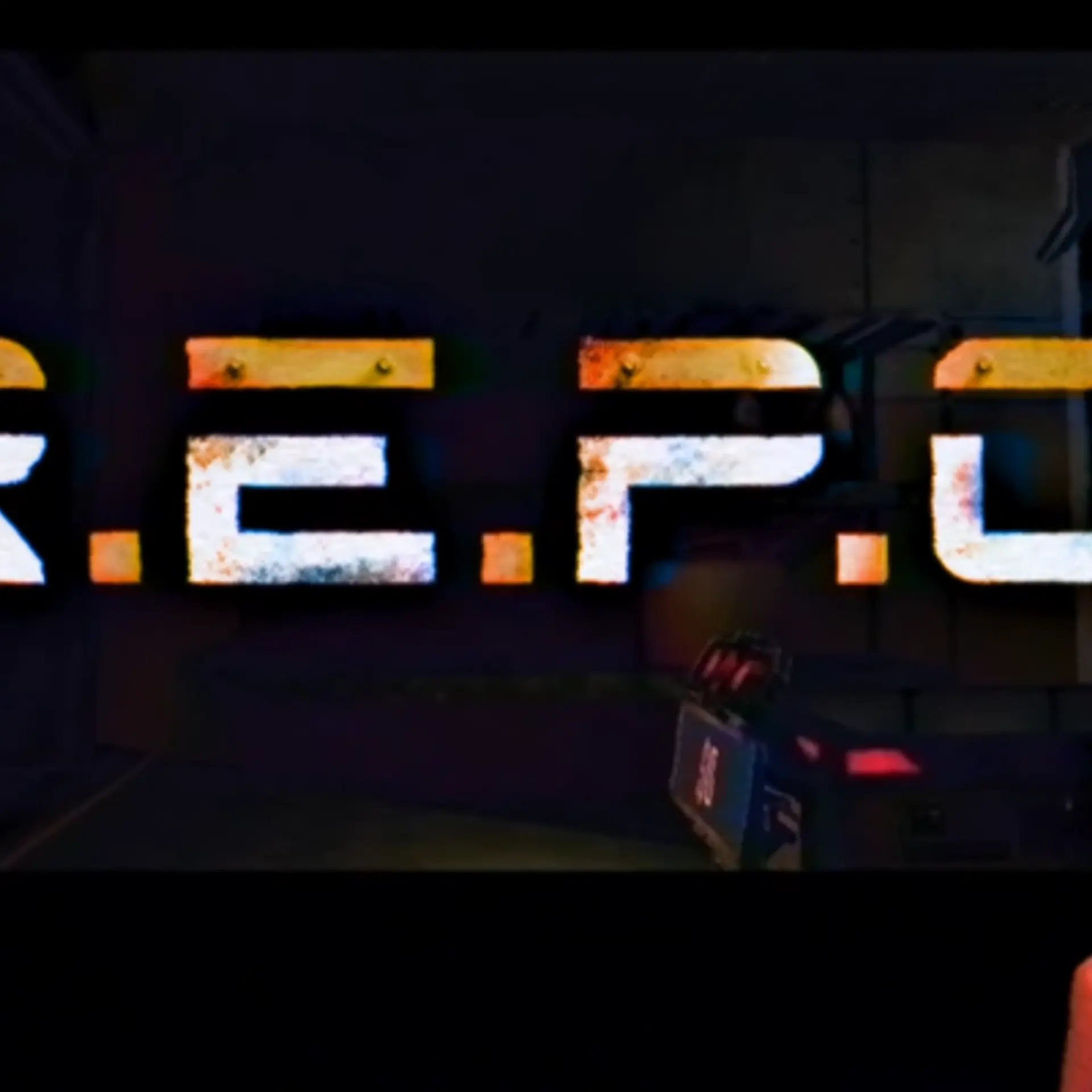Filmmaker goes back to roots, traces history of Hindu Pashtuns
Shilpi Batra Adwani is currently filming Sheenkhalai – The Blue Skin, a documentary that chronicles the agonising tales of Hindu Pashtuns’ displacement from Quetta in 1947.

This is a heart-warming story of a third-generation Hindu Pashtun woman in search of her lineage. A personal narrative that is being made into a documentary, Sheenkhalai – The Blue Skin is a project filmmaker Shilpi Batra Adwani has been working on for the past six years.
Through the tales of her grandmothers, Shilpi seeks to tell the agonising tales of their displacement from Quetta in 1947 and share their enormous wisdom.
Her efforts to trace history paid off when the project received a grant from the India-Afghanistan Foundation recently. The documentary will be released within three months.
Shilpi has 10 years of international experience in both documentary filmmaking and mass media project management. She is an independent filmmaker, educator and creative business entrepreneur with a special interest in social issues and projects involving the preservation of cultural heritage.
Previously, she worked with Sayara Strategies, Kabul, Afghanistan for one-and-a-half years, during which she made a film for the state department, UN agencies and the Afghanistan cricket board.
In a conversation with HerStory, Shilpi speaks about the making of Sheenkhalai – The Blue Skin, the Hindu Pashtuns, and going back to her roots.
HerStory: What fascinates you about filmmaking?
Shilpi Batra Adwani: I have always been fascinated with documenting the present and the past to preserve them for posterity. All of us now are in this massive race to document each and every moment of our lives, but in the bargain we are losing touch with stories by not collecting and storing them. I feel that we are losing stories, human touch, interactions, and personal narratives in this manner. This is the reason I propel a genre of filmmaking that intends to preserve our history and record present-day reality.
HS: How did the idea of Sheenkalai – The Blue Skin come about? Why is it so long in the making?

SBA: The idea of Sheenkhalai - The Blue Skin germinated when I discovered my identity as a Hindu Pashtun. I grew up leading a life of mistaken identity of a Punjabi. In Indian society people are often categorised on the basis of caste and religion very early. To somehow adhere to the mainstream brackets of caste and religion my ancestors identified themselves as Punjabis.
During my time at Jamia Millia Islamia, I met students from Afghanistan, who, I realised, were speaking a language I was familiar with, Pashto. When I enquired, it dawned upon me that my ancestors were Hindus who were forced to flee Quetta in 1947 during Partition to avoid the massacre in that region. They were a large bunch of people who were displaced and settled in various parts of the country.
The intention of the film is to bring their stories alive and relive their past in a way that they feel proud about it. It has taken such a long time to find all these people, and also because we have shot this film around the world. We have shot in parts of Afghanistan, Quetta - Loralai Pakistan, in India, New Delhi, Chittorgarh, Punjab, Uniara, Tonk, Jaipur, and even Washington DC.
HS: What does Sheenkhalai mean?

SBA: The literal translation of ‘Sheenkhalai’ is blue skin. One of the most intriguing things about my ancestors’ appearance was that they had permanent tattoos on their faces and hands. Back in their hometown my grandmothers used to design tattoos on each other’s faces, to enhance their appearances, and Sheenkhalai tattoos were considered beauty marks. But once they moved to India, they were derided and looked down upon due to these unique tattoos.
HS: Can you share any special anecdotes from the making of the documentary?
SBA: This documentary for me is a personal narrative, it has helped me find out things about my culture and my country of origin, that I wouldn’t have otherwise. It has helped me embrace my true identity and brought me closer to my roots.
One particular incident that stuck with me while shooting this film was when I went to speak to my grandmother. She was very reticent and not ready to share much details about her life in the beginning. I took her with me to get her hair washed in a salon, when she saw her silver hair in their true beauty and her eyes sparkled. I allowed her a peek into my life so she would allow me into hers. This helped me cross a barrier she had long created in her life, journey and its trails.
Also, I grew up listening to songs that my grandmothers used to sing but I couldn’t find them anywhere else. Once, in Afghanistan, I came across the same songs, and I could compile 20 songs and play them on a speaker for my grandmothers. The music had a transcending effect on my grandmothers, some of them even started crying after listening to them - for their lost homeland. We were fortunate to capture these emotions.
HS: What did you find about your family lineage?

SBA: While researching for this film, I was interviewed by Voice of America in Washington DC, which went viral. My story spread around the world. During this time, I got to know of Khursheed Jogezai, a resident of Quetta, who promised to connect me with my ancestral land. I got some footage from Maikhtar (Quetta) from Khursheed Jogezai. While showing it to my grandmothers, one of them identified the house in the footage as her relative’s. This made such an impression on me and my community, to see the implication of my work. The past that my ancestors had left, its memories were coming alive and were being celebrated.
Also, while interviewing my grandmothers, we came across trunks of Kakrai Kameez (traditional attire) in shreds, rotting. Kakrai Kameez, the traditional attire of the Pashtun women is a hand-embroidered dress that takes more than a year to finish. We recovered shreds, parts of these old dresses, and are restoring them. During the interview, when we would even mention the Kakria Kameez, my grandmothers would start crying. After settling in India, because clothing also became a point of contention amongst the people here, they started wearing clothes similar to that of their neighbours. They gave up a very important part of their culture to blend into the cultural fabric of their new land and sold their old Kakria Kameez for money, to make ends meet.
HS: What message do you want to give with this documentary?
SBA: This documentary has been a personal journey for me, retracing my familial history. The message that this film speaks out, and loudly so, is that one shouldn’t shirk away from embracing one’s identity and we need to be more accommodative of the others around us, be it of other religions, castes, or cultures. Boundaries are disappearing and we need to be very cognisant of that.
After this research went underway, lots of fragments of my familial past came to life. My community became more conscious and curious about their culture. We are now witnessing healthy signs of revival, in the form of traditional Pashto songs being played during weddings. The new generation is taking pride in its identity, which is a very positive message this documentary has evoked.







